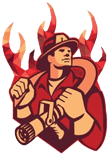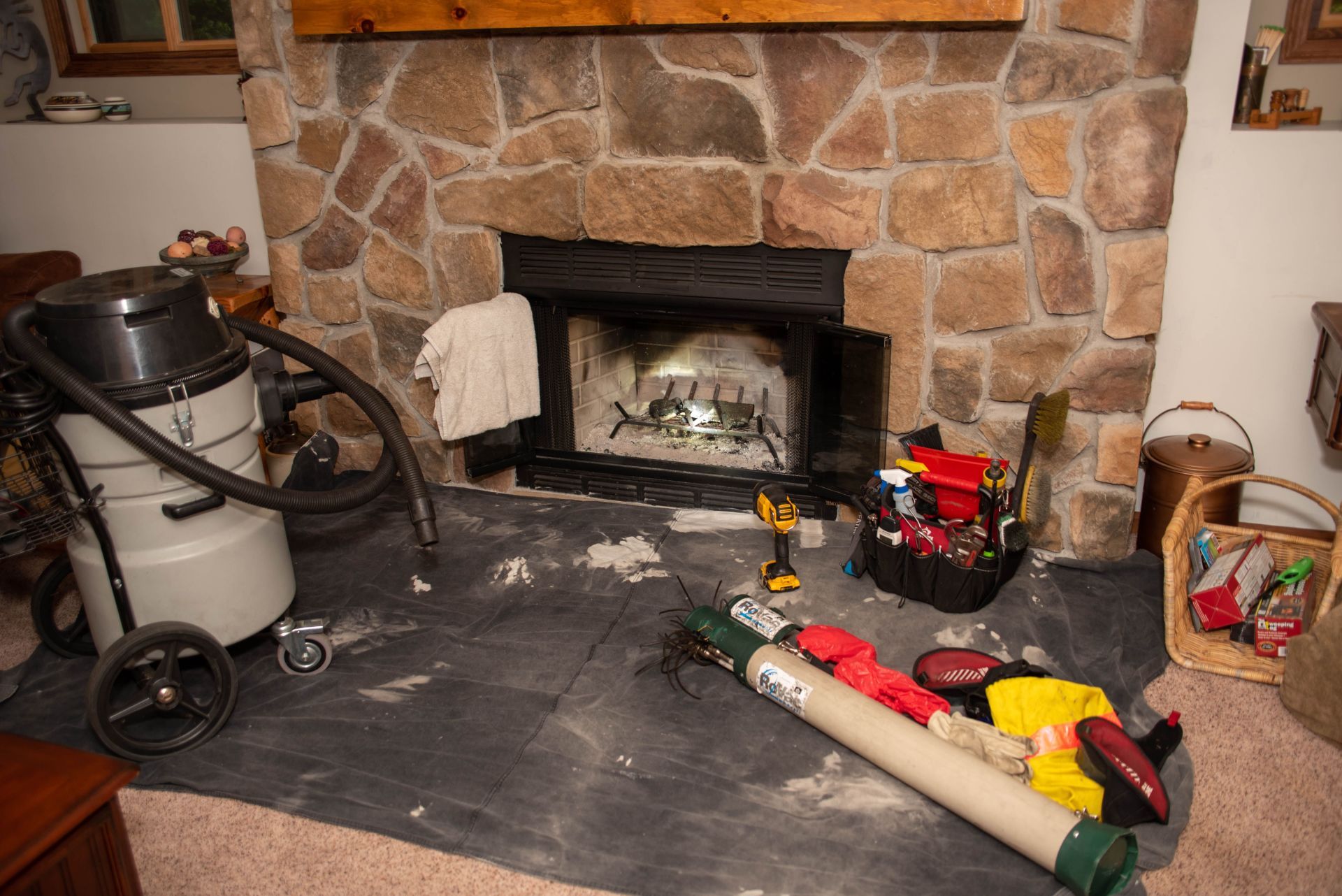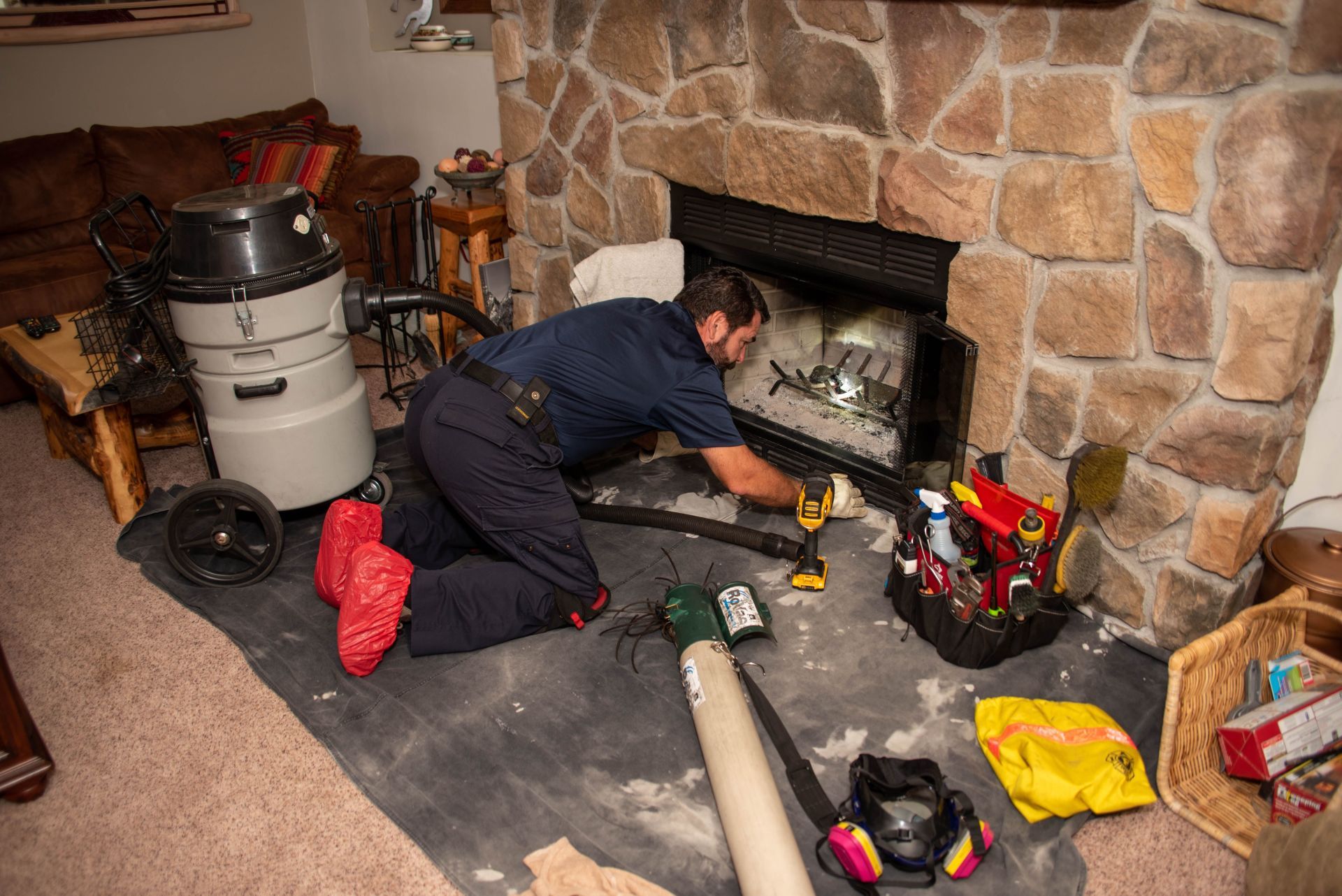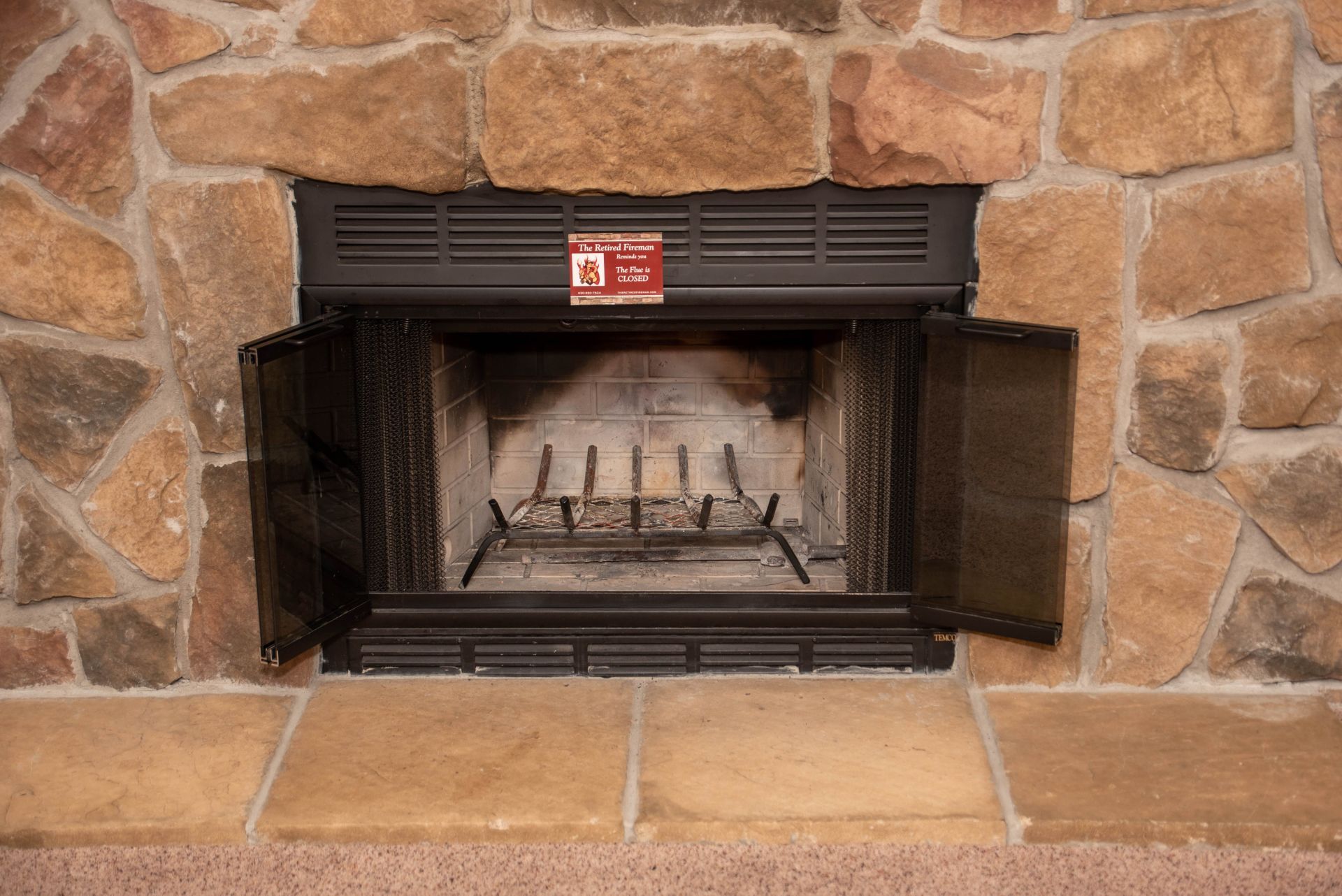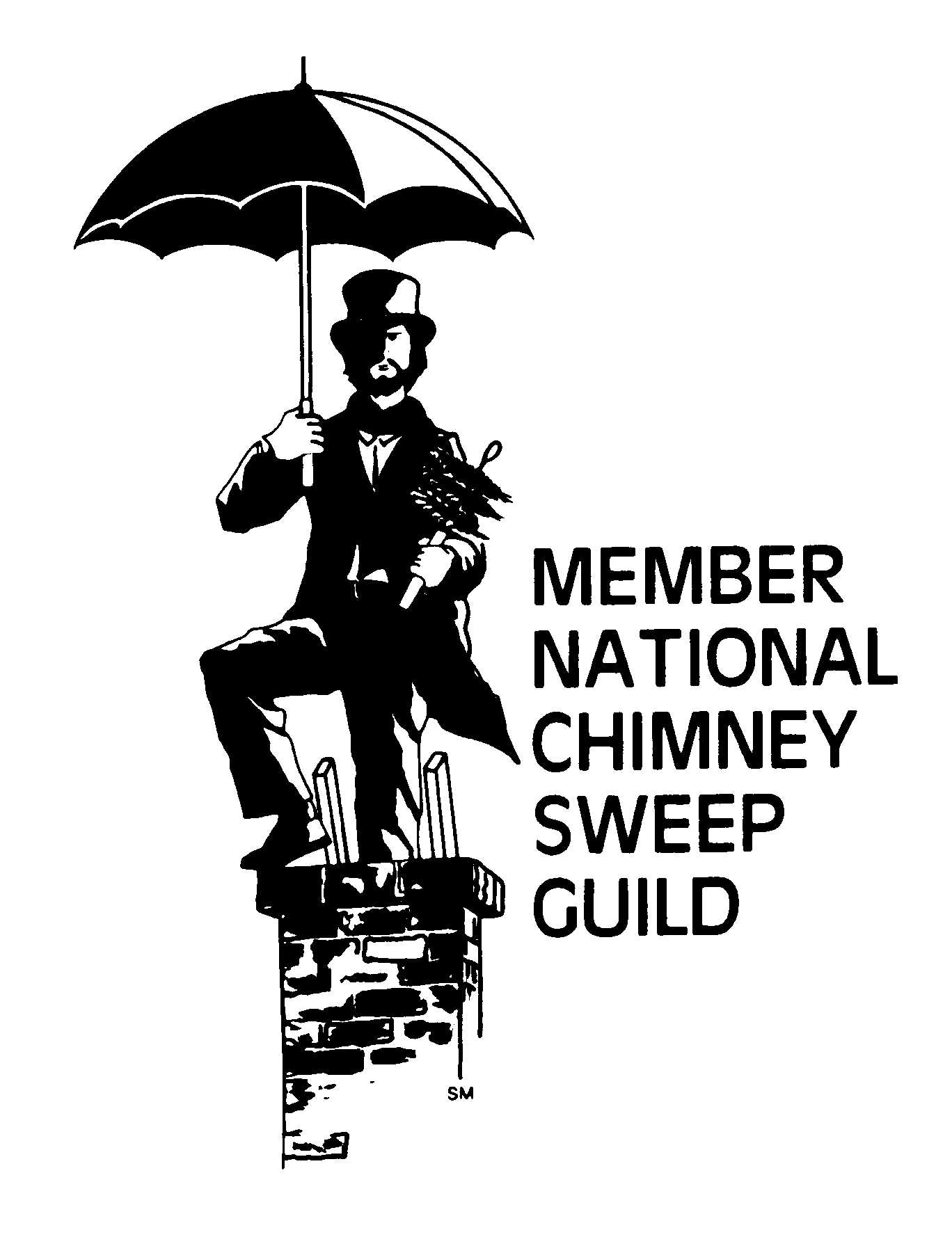Chimney Fires, Causes And Cures
As you snuggle in front of a cozy fire or bask in the warmth of your wood stove, you are taking part in a ritual of comfort and enjoyment handed down through the centuries. The last thing you are likely to be thinking about is the condition of your chimney. However, if you don't give some thought to it before you light those winter fires, your enjoyment may be very short-lived. Why? Dirty chimneys can cause chimney fires, which damage structures, destroy homes and injure or kill people. Chimney fires can burn explosively - noisy and dramatic enough to be detected by neighbors or passersby. Flames or dense smoke may shoot from the top of the chimney. Homeowners report being startled by a low rumbling sound that reminds them of a freight train or a low flying air plane. However, those are only the chimney fires you know about. Slow-burning chimney fires don't get enough air or have enough fuel to be as dramatic or visible. But, the temperatures they reach are very high and can cause as much damage to the chimney structure - and nearby combustible parts of the house - as their more spectacular cousins. With proper chimney system care, chimney fires are entirely preventable.
Creosote And Chimney Fires: What You MUST KNOW!
Fireplaces and wood stoves are designed to safely contain wood-fueled fires, while providing heat for a home. The chimneys that serve them have the job of expelling the by-products of combustion - the substances given off when wood burns. As these substances exit the fireplace or wood stove, and flow up into the relatively cooler chimney, condensation occurs. The resulting residue that sticks to the inner walls of the chimney is called creosote. Creosote is black or brown in appearance. It can be crusty and flaky ... tar-like, drippy and sticky ... or shiny and hardened. Often, all forms will occur in one chimney system.
Whatever form it takes, creosote is highly combustible. If it builds up in sufficient quantities - and catches fire inside the chimney flue- the result will be a chimney fire. Although any amount of creosote can burn, sweeps are concerned when creosote builds up in sufficient quantities to sustain a long, hot, destructive chimney fire.
Certain conditions encourage the buildup of creosote, restricted air supply, unseasoned wood and cooler-than-normal chimney temperatures are all factors that can accelerate the buildup of creosote on chimney flue walls.
Air supply- The air supply on fireplaces may be restricted by closed glass doors or by failure to open the damper wide enough to move heated smoke up the chimney rapidly (the longer the smoke's "residence time" in the flue, the more likely is it that creosote will form). A wood stove's air supply can be limited by closing down the stove damper or air inlets too soon and too much, and by improperly using the stovepipe damper to restrict air movement.
Burning unseasoned firewood
- Because so much energy is used initially just to drive off the water trapped in the cells of the logs - burning green wood keeps the resulting smoke cooler, as it moves through the system, than if dried, seasoned wood is used. Cool flue temperatures : In the case of wood stoves, fully-packed loads of wood (that give large cool fires and eight or 10 hour burn times) contribute to creosote buildup. Condensation of the unburned by-products of combustion also occurs more rapidly in an exterior chimney, for example, than in a chimney that runs through the center of a house and exposes only the upper reaches of the flue to the elements
Masonry chimneys: When chimney fires occur in masonry chimneys - whether the flues are an older, unlined type or are tile lined to meet current safety codes - the high temperatures at which they burn (around 2000' F) can "melt" mortar, crack tiles, cause liners to collapse and damage the outer masonry material. Most often, tiles crack and mortar is displaced, which provides a pathway for flames to reach the combustible wood frame of the house. One chimney fire may not harm a home. A second can burn it down. Enough heat can also conduct through a perfectly sound chimney to ignite nearby combustibles.
Pre-fabricated, factory-built, metal chimneys. To be installed in most jurisdictions in the United States, factory-built, metal chimneys that are designed to vent wood burning stoves or pre- fabricated metal fireplaces must pass special tests determined by Underwriter's Laboratories (U.L.). Under chimney fire conditions, damage to these systems still may occur, usually in the form of buckled or warped seams and joints on the inner liner. When pre-fabricated, factory-built metal chimneys are damaged by a chimney fire, they should no longer be used and must be replaced.
Signs That You've Had A Chimney Fire
Since chimney fires can occur without anyone being aware of them ... and since damage from such fires can endanger a home and its occupants, how do you tell if you've experienced a chimney fire? Here are the signs a professional chimney sweep looks for:
If you think a chimney fire has occurred, visit the Chimney Safety Institute of America. They have a searchable index of sweeps you can access by state from their home page. If your suspicions are confirmed, a certified sweep will be able to make recommendations about how to bring the system back into compliance with safety standards. Depending on the situation, you might need a few flue tiles replaced, a relining system installed or an entire chimney rebuilt. Each situation is unique and will dictate its own solution.
